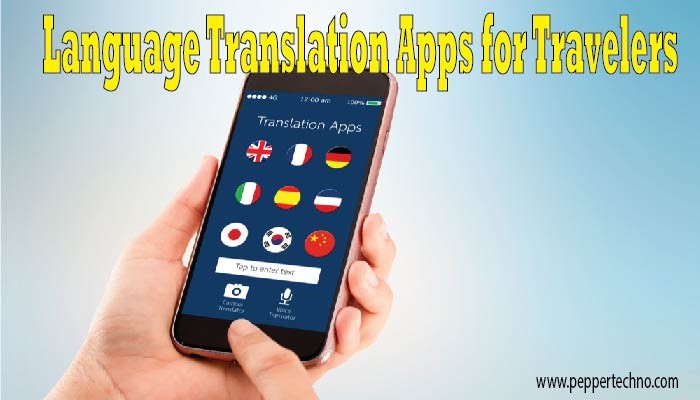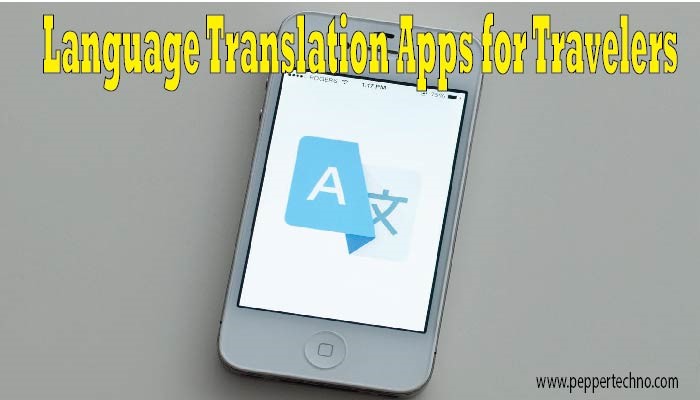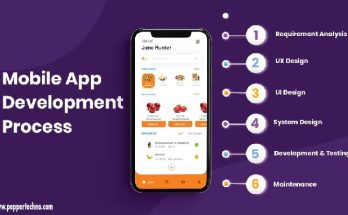Navigating Global Conversations: A Comprehensive Guide to Language Translation Apps for Travelers
In an increasingly interconnected world, travel has become an integral part of our lives. Whether it’s for leisure or business, exploring new cultures and meeting people from diverse backgrounds has never been easier. However, the language barrier can often pose a significant challenge for travelers. Fortunately, the advent of language translation apps has revolutionized the way we communicate abroad. In this article, we will explore the top language translation apps for travelers, their features, and how they can enhance your globetrotting experience.

The Rise of Language Translation Apps
1. Historical Perspective
Language translation has come a long way from traditional phrasebooks and pocket dictionaries. With the rise of smartphones and advancements in artificial intelligence, translation apps have become indispensable tools for modern travelers. Gone are the days of awkward language fumbling – today’s tech-savvy explorers can rely on intuitive apps to bridge linguistic gaps.
2. The Role of Artificial Intelligence
Modern language translation apps leverage the power of artificial intelligence (AI) to provide real-time, accurate translations. Machine learning algorithms analyze vast datasets to understand context, tone, and colloquial expressions, resulting in more natural and contextually appropriate translations.
Top Language Translation Apps
1. Google Translate
Undoubtedly, one of the most widely used language translation apps, Google Translate, stands out for its versatility and reliability. Available for both Android and iOS, this app supports over 100 languages, offers offline translation capabilities, and features a camera translation function for instant text translation. Google Translates simplicity and integration with other Google services make it a go-to choice for many travelers.
2. Microsoft Translator
Microsoft’s language translation app is another formidable player in the market. Compatible with various platforms, including smartphones and smart watches, Microsoft Translator boasts a user-friendly interface and supports an extensive list of languages. One notable feature is its conversation mode, allowing users to engage in bilingual conversations in real-time. The app also offers offline translation for selected languages, making it a reliable companion in areas with limited connectivity.
3. I Translate
Tailored for iOS users, I Translate is a feature-rich translation app that goes beyond basic language conversion. It offers voice-to-voice translation, a keyboard extension for seamless texting in multiple languages, and an Apple Watch app for on-the-go translation. I Translates premium version unlock additional features like offline translation and enhanced voice recognition, catering to the needs of both casual and frequent travelers.
4. Papago
Hailing from South Korea, Papago has gained popularity for its accuracy in Asian languages. Developed by Never Corporation, Papago supports a wide range of languages and features a user-friendly interface. Notable functionalities include image translation, voice recognition, and a conversation mode that facilitates smooth communication between speakers of different languages. Papago’s strength lies in its proficiency with languages that have complex structures and nuances.
Key Features and Considerations
1. Offline Translation
One crucial consideration for travelers is the availability of offline translation. Many language translation apps allow users to download language packs for offline use, ensuring functionality in areas with limited or no internet connectivity. This feature is particularly valuable for globetrotters venturing into remote or off-the-grid destinations.
2. User Interface and Experience
The effectiveness of a language translation app often hinges on its user interface and overall user experience. Intuitive design, easy navigation, and clear instructions contribute to a seamless interaction with the app, especially in high-pressure situations where quick translations are essential.
3. Pronunciation Assistance
For travelers aiming for authentic communication, pronunciation assistance is a valuable feature. Some language translation apps provide audio pronunciations for translated phrases, aiding users in mastering the correct intonation and accent. This feature proves beneficial when attempting to converse with locals in a culturally respectful manner.
Overcoming Challenges and Limitations
1. Accuracy and Nuances
While language translation apps have come a long way in terms of accuracy, nuances and cultural subtleties can still pose challenges. Automated translations may struggle with idioms, colloquialisms, or context-specific expressions. Travelers should be aware of these limitations and use the apps as aids rather than complete substitutes for human understanding.
2. Connectivity Issues
Reliance on internet connectivity is a common drawback for many language translation apps. Users traveling to areas with poor or no internet access may find themselves in a communication bind. To address this, some apps offer offline translation capabilities, allowing users to download language packs in advance.
Future Trends in Language Translation Apps
1. Integration of Augmented Reality
The future of language translation apps may involve augmented reality (AR) to enhance real-world interactions. Imagine holding up your smartphone, and the app instantly translates street signs, menus, or conversations in real time through AR overlays. This immersive experience could revolutionize the way travelers navigate foreign environments.
2. Enhanced Natural Language Processing
As AI technology continues to evolve, language translation apps will likely improve their natural language processing capabilities. This means a deeper understanding of context, idiomatic expressions, and cultural nuances, making the translations even more accurate and contextually appropriate.
Conclusion
Language translation apps for travelers have become invaluable tools for globetrotters, breaking down barriers and facilitating cross-cultural communication. Whether you’re a casual traveler or a frequent jetsetter, having the right language translation app can significantly enhance your overall experience. With the continuous advancements in AI and machine learning, the future promises even more sophisticated and seamless language translation solutions for the adventurous souls navigating the diverse landscapes of our globalized world.



